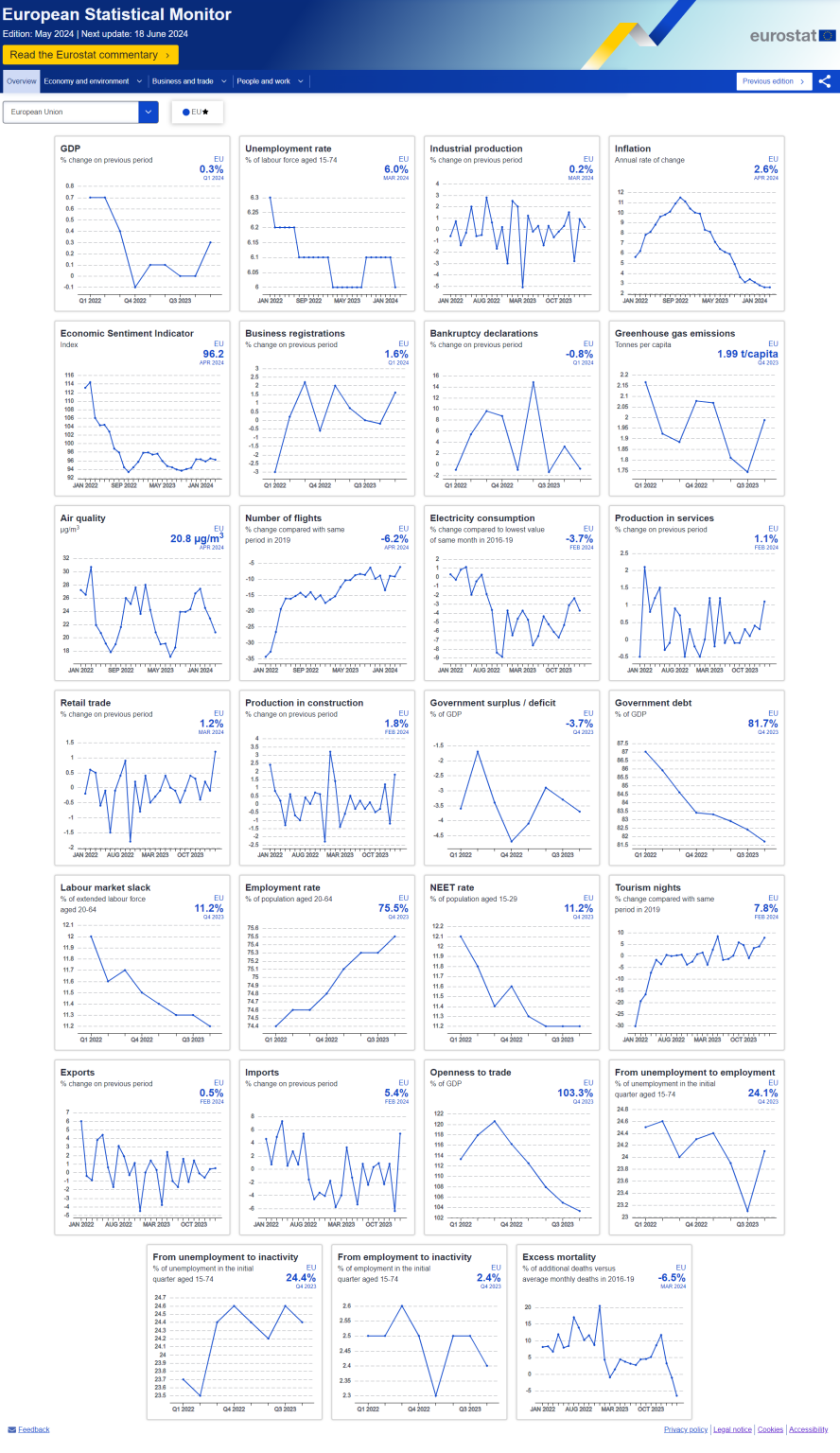Today, Eurostat released the European Statistical Monitor, a dashboard with short-term indicators covering different areas, such as economy, environment, business, health and work.
This monthly updated dashboard is designed to track developments within the EU as a whole and its members, as well as the EFTA countries, providing a holistic overview of key developments. It focuses on monthly and quarterly indicators, ensuring up-to-date insights and includes a commentary, focusing on recent changes and trends.
May highlights: The EU economy rebounds after a prolonged period of stagnation, while inflation remains stable and economic sentiment weakens
The EU economy staged a comeback in Q1 2024 with moderate quarter-on-quarter GDP growth, after a prolonged period of stagnation. In the same quarter, bankruptcy declarations decreased, broadly remaining at the level observed in Q2 2023.
At the sectoral level, EU industrial production saw a month-on-month increase for the second consecutive month in March 2024, albeit at a slower pace. Despite these recent gains, the sharp decline in January 2024 highlights the sector’s variable growth path. Industrial production remains well below its peak levels recorded in 2022. Meanwhile, EU retail trade strongly rebounded on a month-on-month basis in March 2024, following a slight decrease in February 2024. However, overall, retail sales remain well below their peak levels observed in 2021 and 2022. In contrast, EU production in services marked a month-on-month increase for the fifth consecutive month in February 2024, reaching a new historical high.
Against this backdrop, in April 2024, the EU annual inflation rate remained unchanged from the previous month. Meanwhile, the EU unemployment rate decreased slightly month-on-month in March 2024, maintaining historically low levels.
EU economic sentiment weakened in April 2024, partially reversing the improvement observed in the previous month. This decrease was driven by slightly lower confidence in the industry and services sectors, while confidence in the retail trade and construction sectors, as well as among consumers, remained broadly stable. Consequently, the European Commission’s Economic Sentiment Indicator continues to hover below its long-term average.
You can read the full analysis by opening the Eurostat commentary linked in the dashboard’s header.
The European Statistical Monitor is updated every month with the latest available data for each indicator.

